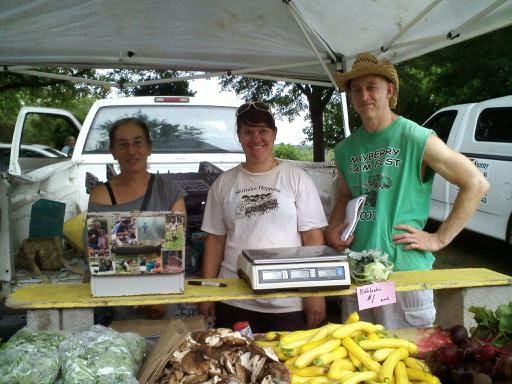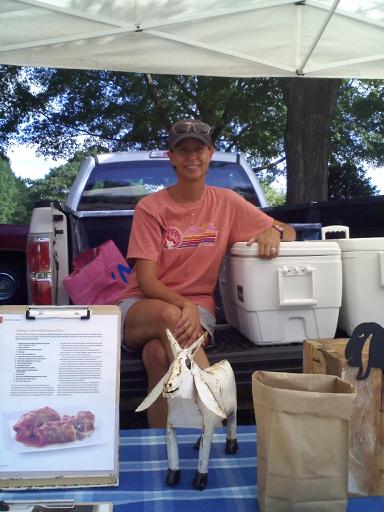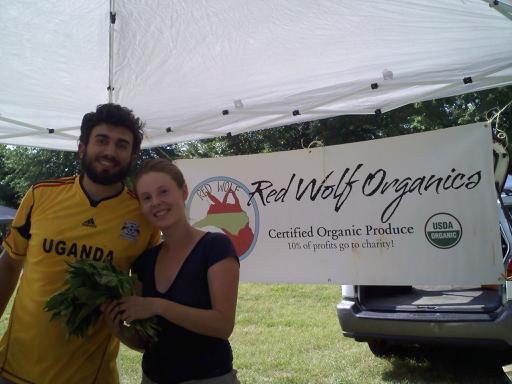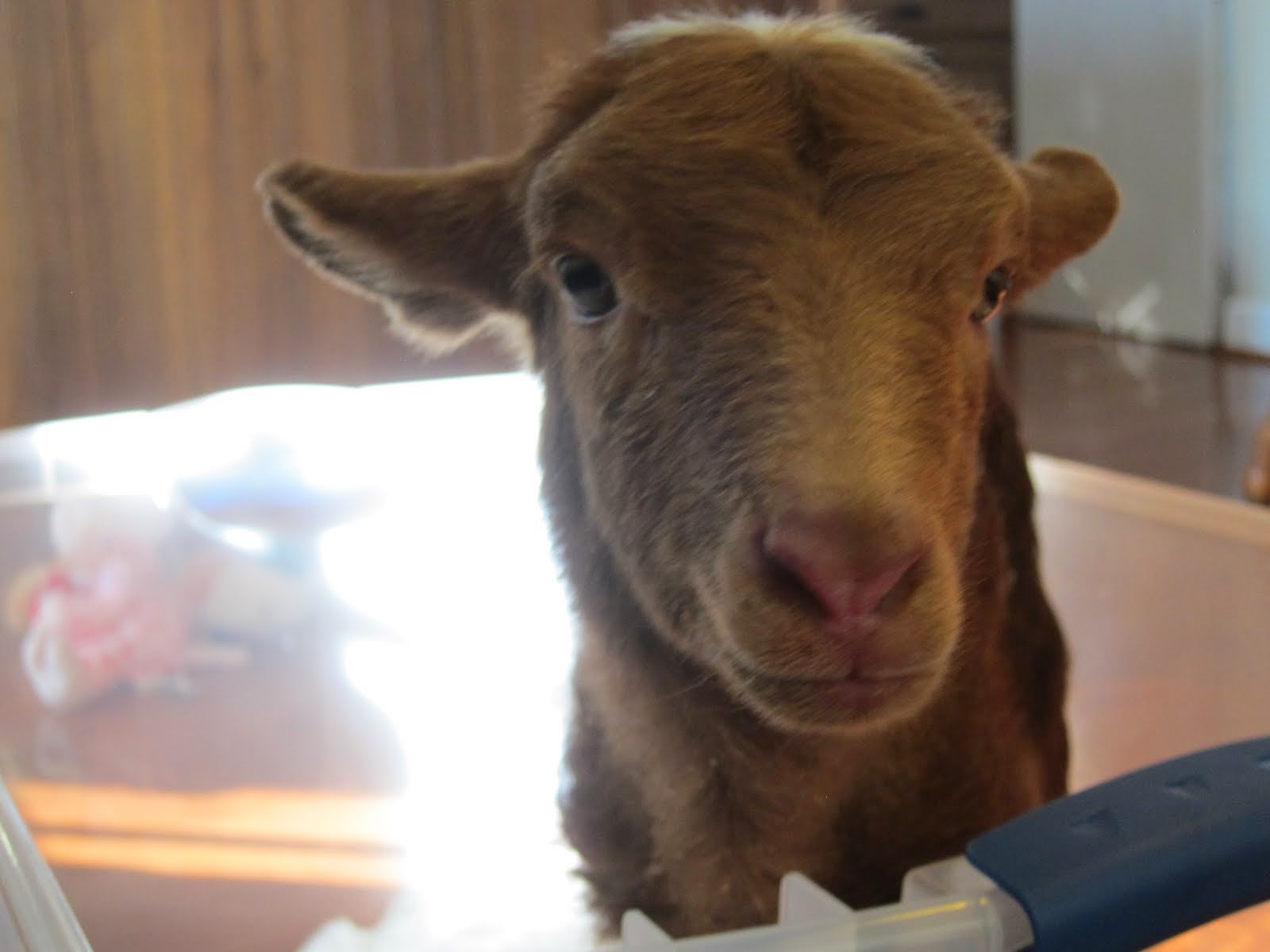Arsenic is beloved of industrial-scale livestock producers because it makes animals grow faster and turns their meat a rosy pink. It enters feed in organic form, which isn't harmful to humans. Trouble is, in animals guts, it quickly goes inorganic, and thus becomes poisonous. Several studies, including one by the FDA, have found heightened levels of inorganic arsenic in supermarket chicken, and its also ends up in manure, where it can move into tap water. Fertilizing rice fields with arsenic-laced manure may be partially responsible for heightened arsenic levels in US rice.
. . . As the US chicken industry has sped up kill lines in recent years, it has resorted to heavier use of chlorine-based washes to "decrease microbial loads on carcasses," The Washington Post recently reported, quoting a previously unreleased USDA document.
. . . Antibiotic use has surged on US animal farms has spiked in recent years—and now accounts for 80 percent of all antibiotic use. Meanwhile, meat sold in US supermarkets is rife with antibiotic-resistant bacteria.
I was thinking (again) just the other day about why it seems so difficult to maintain my ideal weight now even though I exercise every day and don't overindulge in sweets or carbs or any but the healthiest type of fats (grapeseed and olive oil), and what I could do to improve my diet, which already is mainly fish and vegetables (or vegetables and vegetables).
After reading the following essay, I'm thinking that my occasional meals of a turkey or chicken sandwich, lemon or tarragon chicken, fettuccine alfredo or even a really rare (organic) hamburger (not a hamburger, rare, of course) have probably got to go. But something else must be going on too because it seems like my metabolism has stabilized on very little food (and at least an hour of strenuous exercise every day), and that can't be the way a healthy body normally utilizes its calorie intake (or at least I don't think that several decades ago healthy bodies did). I've actually begun to think that I've turned into a human being with a large and growing plastic component. I learned (and it seems true enough to be believed) in the Josh Radnor movie Liberal Arts that dead people are taking longer to decompose due to all the preservatives in their diet. My guess is that those dead bodies all weigh a few extra pounds too.
Mother Jones fills in the knowledge gaps about the feed and processing standards in the U.S.A. versus the ones abided by in Europe, Japan, China, and Russia. (I'm pretty sure I'm tasting chlorine right now - must be that quick lunch Burger King original chicken sandwich (except that it doesn't taste like that original chicken sandwich now).)
7 Dodgy Food Practices Banned in Europe But Just Fine Here
—By Tom Philpott
May. 8, 2013
Last week, the European Commission voted to place a two-year moratorium in most uses of neonicotinoid pesticides, on the suspicion that they're contributing to the global crisis in honeybee health (a topic I've touched on here, here, here, and here). Since then, several people have asked me whether Europe's move might inspire the US Environmental Protection Agency to make a similar move—currently, neonics are widely used in several of our most prevalent crops, including corn, soy, cotton, and wheat.
The answer is no. As I reported recently, an agency press officer told me the EU move will have no bearing on the EPA's own review of the pesticides, which aren't scheduled for release until 2016 at the earliest.
All of which got me thinking about other food-related substances and practices that are banned in Europe but greenlighted here. Turns out there are lots. Aren't you glad you don't live under the Old World regulatory jackboot, where the authorities deny people's freedom to quaff to atrazine-laced drinking water, etc., etc.? Let me know in comments if I'm missing any.
1) Atrazine
Why it's a problem: A "potent endocrine disruptor," Syngenta's popular corn herbicide has been linked to range of reproductive problems at extremely low doses in both amphibians and humans; and it commonly leaches out of farm fields and into people's drinking water.
What Europe did: Banned it in 2003.
US status: EPA: "Atrazine will begin registration review, EPA’s periodic re-evaluation program for existing pesticides, in mid-2013."
2) Arsenic in chicken, turkey, and pig feed
Why it's a problem: Arsenic is beloved of industrial-scale livestock producers because it makes animals grow faster and turns their meat a rosy pink. It enters feed in organic form, which isn't harmful to humans. Trouble is, in animals guts, it quickly goes inorganic, and thus becomes poisonous. Several studies, including one by the FDA, have found heightened levels of inorganic arsenic in supermarket chicken, and its also ends up in manure, where it can move into tap water. Fertilizing rice fields with arsenic-laced manure may be partially responsible for heightened arsenic levels in US rice.
What Europe did: According to the Institute for Agriculture and Trade Policy, arsenic-based compounds "were never approved as safe for animal feed in the European Union, Japan, and many other countries."
US status: The drug giant Pfizer "voluntarily" stopped marketing the arsenical feed additive Roxarsone back in 2011. But there are still several arsenicals on the market. On May 1, a coalition of enviro groups including the Center for Food Safety, the Institute for Agriculture and Trade Policy, the Center for Biological Diversity filed a lawsuit demanding that the FDA ban them from feed.
3) "Poultry litter" in cow feed
Why it's a problem: You know how arsenic goes inorganic—and thus poisonous—in chickens' guts? Consider that their arsenic-laced manure is then commonly used as a feed for cows. According to Consumers Union, the stuff "consists primarily of manure, feathers, spilled feed, and bedding material that accumulate on the floors of the buildings that house chickens and turkeys." The "spilled feed" part is of special concern, because chickens are often fed "meat and bone meal from dead cattle," CU reports, and that stuff can spill into the litter and be fed back to cows, raising Mad Cow Disease concerns.
What Europe did: Banned all forms of animal protein, including chicken litter, in cow feed in 2001.
US status: The practice remains unrestricted. US cattle consume about 2 billion pounds of it annually, Consumers Union's Michael Hanson told me last year.
4) Chlorine washes for poultry carcasses
Why it's a problem: As the US chicken industry has sped up kill lines in recent years, it has resorted to heavier use of chlorine-based washes to "decrease microbial loads on carcasses," The Washington Post recently reported, quoting a previously unreleased USDA document. As I've noted, the USDA is preparing to release new rules that would speed up kill lines still more as well as allow companies to douse every carcasses that comes down the line with antimicrobial sprays, "whether they are contaminated or not." According to the Post, poultry workers and USDA inspectors attribute a "range of ailments" to the practice, including "asthma and other severe respiratory problems, burns, rashes, irritated eyes, and sinus ulcers and other sinus problems."
What Europe did: The EU not only bans the practice, but refuses to accept US poultry that has been treated with antimicrobial sprays.
US status: As stated above, the USDA is preparing to roll out new rules that will increase the practice.
5) Antibiotics as growth promoters on livestock farms
Why they're a problem: Antibiotic use has surged on US animal farms has spiked in recent years—and now accounts for 80 percent of all antibiotic use. Meanwhile, meat sold in US supermarkets is rife with antibiotic-resistant bacteria.
What Europe did: In the EU, all antibiotics used in human medicines are banned on farms—and no antibiotics can be used on farms for "non-medical purposes," i.e., growth promotion.
US status: The FDA is floating new rules that would ban on antibiotics as growth promoters—but the regulation would be voluntary.
6) Ractopomine and other pharmaceutical growth enhancers in animal feed
Why it's a problem: Fed to an estimated 60 to 80 percent of US hogs, ractopomine makes animals grow fast whole also staying lean. Unfortunately, it does so by mimicking stress hormones, making animals miserable.
The excellent food-safety reporter Helena Bottemiller looked at FDA documents and found that between its introduction in 1998 and 2011, the drug had killed 210,000 pigs—"more than any other animal drug on the market."
Pigs treated with it, she found, suffer from ailments ranging from hyperactivity and trembling to broken limbs and the inability to walk. (Beef cows are fed similar drugs, as are turkeys.) Traces of these pharmaceuticals end up in our meat—and according to Bottemiller, their effects on humans are little-studied.
What Europe did: Europe not only bars its own producers from using ractopamine, it also refuses to allow imports of meat treated with it—as do China and Russia.
US status: Rather than trying to rein in ractopamine use, the Obama administration is actively seeking to force Europe and other nations to accept our ractopamine-treated pork.
7) Gestation crates
Why it's a problem: The sows that breed the hogs confined in US factory farms spend nearly their entire lives stuffed into crates so small "so small the animals can't even turn around or take more than a step forward or backward," Humane Society of the US reports. An undercover HSUS investigation of a sow facility run by pork giant Smithfield in 2011 found, among other horrors, this:
The animals engaged in stereotypic behaviors such as biting the bars of crates, indicating poor well-being in the extreme confinement conditions. Some had bitten their bars so incessantly that blood from their mouths coated the fronts of their crates. The breeding pigs also suffered injuries from sharp crate protrusions and open pressure sores that developed from their unyielding confinement.What Europe did: Banned them, effective this year.
US status: Pork giants Smithfield, Cargill, and Hormel have pledged to phase them out; several fast-food chains including McDonald's, Burger King, Wendy's, and Subway have promised to stop buying from suppliers who use the crates; and nine states have banned the practice, HSUS reports. But the practice remains widespread, and as industry flack Rick Berman recently put it, a large swath of the pork industry "has no plans to stop using standard sow housing."
And what do you want to bet that the future planned testing of these additives and procedures in the U.S.A. will be performed by minimum-wage workers on a speeded up line?

























2 comments:
Good post. Thank you for spreading the truth. It is a dangerous and often thankless task but must be done. The battle for our health is as important as the battle for our minds. Onward to Victory!!!
Carol A. Valentine
There's no way our bought-and-paid-for government will ever do anything about factory farms. It's up to all of us to not patronize their products. Easier said than done. I'm not a vegetarian; I eat lots of fish, some chicken, no red meat.
As far as your own diet is concerned, have you tried eliminating wheat? I really think wheat (also rye and barley, since they also contain gluten) is the "healthy" food that's poisoning all of us. My wife and I both went off dairy products and most grains (rice and quinoa are still allowed) almost 3 weeks ago. We're both losing weight and feeling better and more energetic.
I'll go back on yogurt at some point, for the probiotics.
Post a Comment